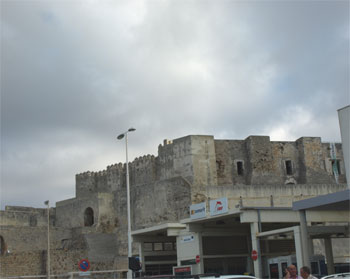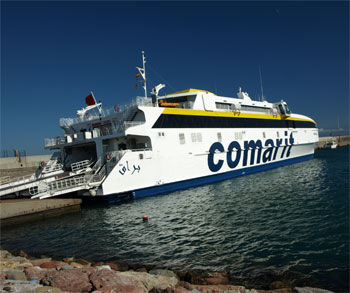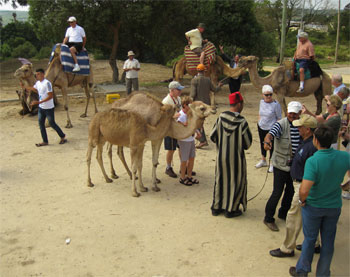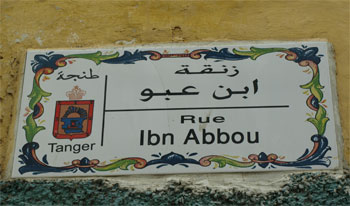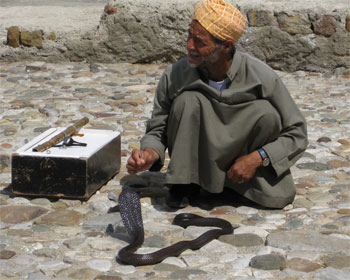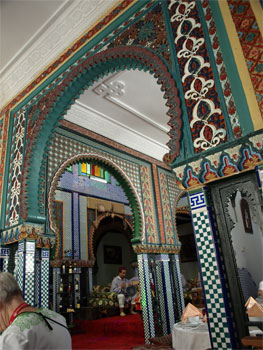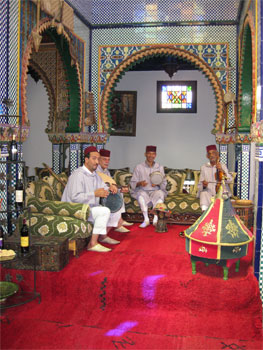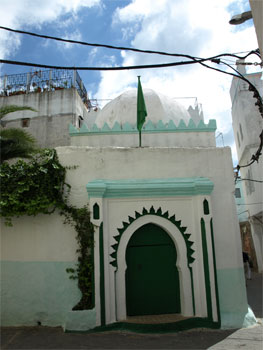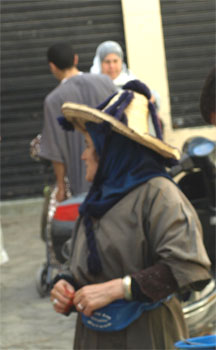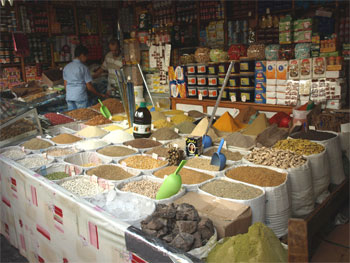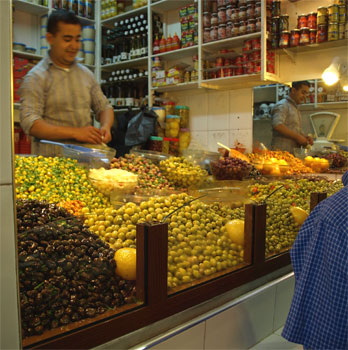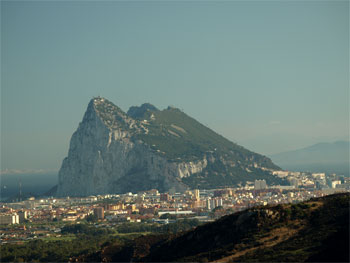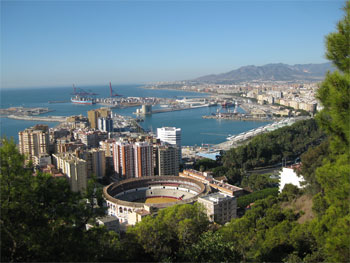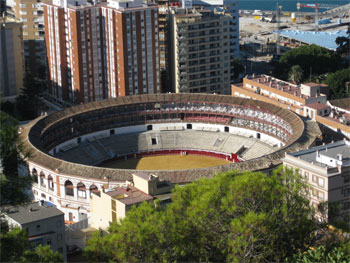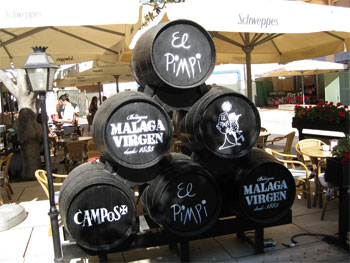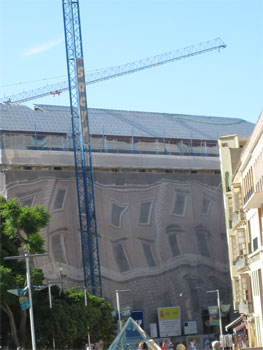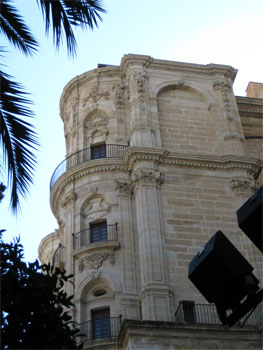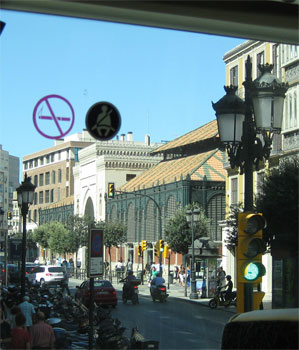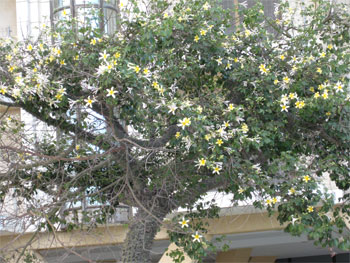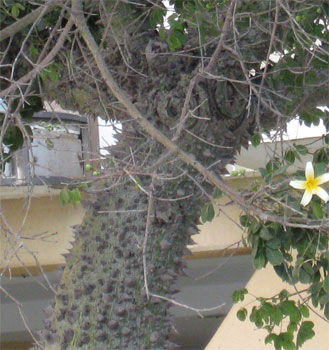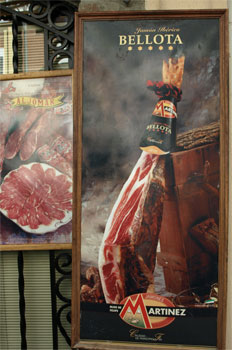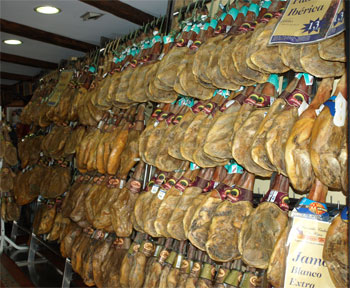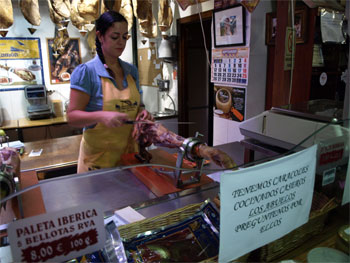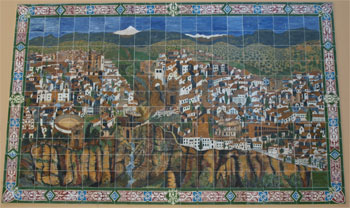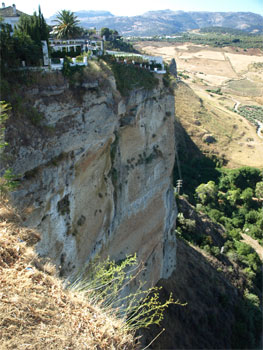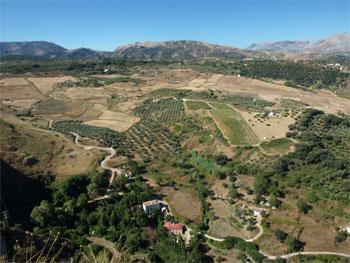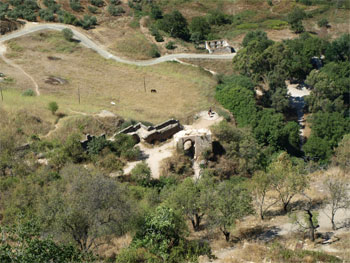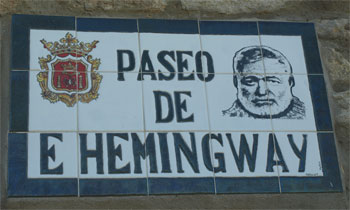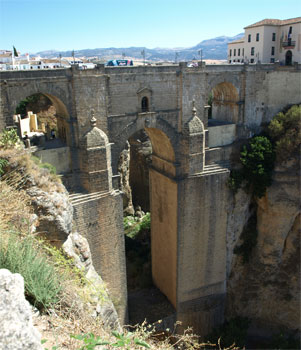Sun., 9/4/11 - Tour to Tangier, Morocco
We were up very early for our optional trip to Tangier in Morocco.
The trip to Tarifa, Spain, where we caught the ferry to Tangier, was a two-hour bus ride. Tarifa is at the southern most tip of Spain. It was a 14th c. Moorish fortress mainly protecting against piracy. The road to Tarifa was a toll road with numerous tunnels. We could see the Mediterranean and got a glimpse of the Rock of Gibraltar.
The Strait of Gibraltar is about 8.9 miles wide at its narrowest but is up to 3,000 feet deep. It is far too windy for a bridge but maybe someday there will be a tunnel.
We took a hydrofoil ferry across the 30 miles to Tangier. It was a smooth ride.
Fortress at Tarifa
|
Hydrofoil ferry to Tangier |
We boarded another bus in Tangier and got a Moroccan guide. He told us that 300 ships a day pass through the Strait of Gibraltar. Tangier has both Mediterranean and Atlantic beachfront and has all the charm of an old Moroccan Kasbah and medina. Tangier has been controlled by eight different empires/countries in its history - Phoenician, Roman, Arab, France, Spain, etc. We drove through several different international neighborhoods - French, Jewish, Spanish, British (with its golf course and cricket pitch), American, and the rich. Morocco was the first sovereignty/country to recognize the US in 1776 and there are many rich Americans who have lived here. We stopped at a camel ride vendor to give those who wanted to an opportunity to briefly ride a camel.
|
|
Camel ride anyone?
|
Street sign |
We walked through the Kasbah, the 500-year old fortified part of the city. It had the narrow winding alleys and white walled buildings, an old synagogue, mosque, etc. We ate lunch at a rich person's house (now a restaurant) in the Kasbah.
|
Snake charmer on the street
|
Restaurant
|
Luncheon entertainment |
Tile work |
Mosque
|
Beautiful blue doors and walls |
We walked through the medina and alleys of souks and fresh food markets. We still like the displays of olives and spices and sweets. The streets were full of souvenir hawkers that became quite bothersome. Morisco farmwomen in their funny hats sat in the middle of the streets to sell fresh herbs and vegetables.
Morisco farmwoman wearing her distinctive hat
|
In the market |
Olives!
|
On the drive from Tarife back to Torremolinos we stopped at an overlook to get a closer look at the Rock of Gibraltar.
|
Rock of Gibraltar
|
Mon., 9/5/11 - Torremolinos and Malaga
This morning we visited the city of Malaga, just east of our beach suburb of Torremolinos. It is another city that had been ruled by eight different empires and, as a result, there are influences and ruins from several periods. We drove up to the top of a 15th c. Moslem fortress and looked down on Malaga and the volcanic sand beach created from dredged sea pebbles. The beach area is named Picasso because he was born here in 1881.
Malaga
|
Bullring |
In the downtown area we looked at a Roman theater that was discovered in 1951 during a building project. The theater is positioned right below the walls of the older Arabic fortress. The Roman rulers Marcus Aurelius, Trajan, and Hadrian were all born here in Southern Spain. Across the street from the Roman theater was an old restaurant/pub called El Pimpi. Other than the fact that sailors came here to find prostitutes, the wine barrels were of interest. Six barrels were put on their sides in a pyramid with the newest wine at the top. As the wine in the bottom barrels was drunk, fresher wine was poured from above to keep a constant flavor.
|
|
Roman theater ruins
|
Wine barrels at El Pimpi |
Many construction projects in the Spanish cities use the protective screens we first saw in Russia. The one today on the new Malaga fine arts museum is a picture of the building with a wavy facade. Cute!
|
Construction screen
|
|
|
We walked around the Malaga Cathedral. It was originally a mosque with 120 pillars. It now has 15 chapels and was under construction for 250 years but remains unfinished.
|
|
Sculpture by Jose Seguiri - |
Train station by Eiffel in downtown Malaga
|
Sadness of the monkey tree |
Close-up of the bark - now you know how it got its name |
Tues., 9/6/11 - Rhonda and Seville, Spain
We left the Costa del Sol at 8:30 and drove north into the mountains to Rhonda. There were orange and lemon groves and cut wheat fields along the way.
In Rhonda we walked to La Casa Del Jamon, which sells the expensive cured Iberico pig legs (ham - Jamon Iberico). It is salted and dried for 2 or 3 years and is sliced thinly off the leg held on a meat hanger. It is very expensive and melts in your mouth. The hams were all hanging by their feet along the walls of the shop.
Jamon Iberico
|
Jamon Iberico |
Slicing the ham from the pig's leg
|
Welcome to Rhonda
|
Mosaic map of the town
|
Statue of a bull in the Plaza de Toros
|
Rhonda is a very old mountain city with fortress wall and a deep ravine separating the old town from the new area. There are many places to look out from town and over the countryside. We could see the 12th c. Moorish walls of the town, the farmland, and the Sierra Rhonda Mountains.
|
Town atop the ravine walls
|
Looking down at the countryside
|
12th century Moorish ruins |
Orson Wells and Ernest Hemmingway loved this beautiful little town. They were both inspired to write while living here and Orson Wells' ashes are scattered here.
|
|
|
|
Workmen installing sidewalk mosaics |
2000-year-old stone bridge crossing the town ravine
|
Back on the bus we headed to Seville. Seville is an inland port city because the Guadalquivir River is navigable (30 feet deep) 60 miles from the Atlantic Ocean. The city was built in the first c. AD by the Romans as a place for retired soldiers to live. In 1248 the Arabs took over and in the 16th c. Seville became the storehouse for the gold and silver taken from Central and South America. It is also a city of famous painters.
| Return to Top | Return to Itinerary | Return to Dreamcatcher Home Page |
